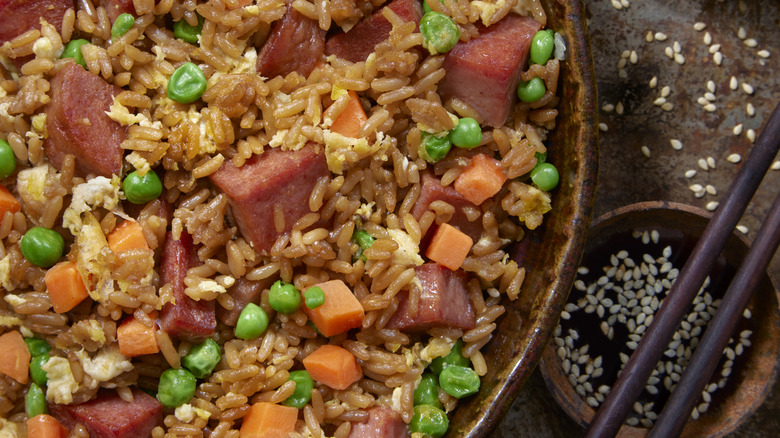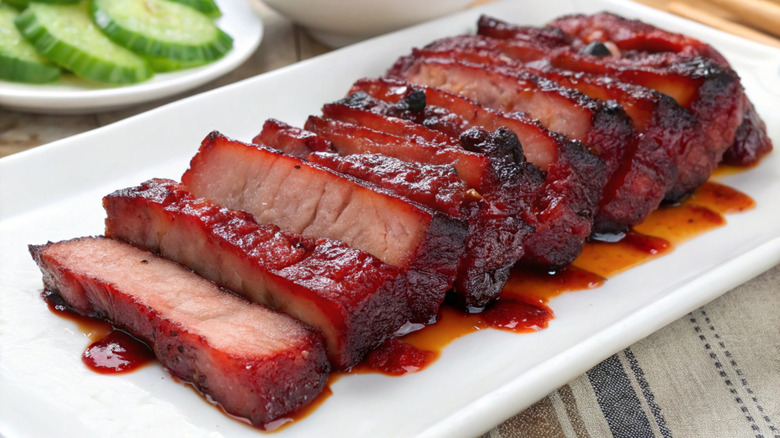Why The Pork In Chinese Fried Rice Is Red
I grew up looking forward to Friday nights because I knew we were having Chinese takeout, and I adored it (still do). There was one time when I was a couple scoops deep into a plate of perfect fried rice and had a reservation or two about the pieces of meat being bright red, and I asked my dad why they looked like that. He's no chef or expert in Asian cuisine, so he had little to offer outside of, "I don't really know, but I know it's delicious and it's not undercooked, so it's safe!"
That was enough for me to continue on and never look back. In my adult years, though, I circled back to this question, and thankfully, the color isn't from a quick toss in the wok, but rather it has to do with how the pork is prepared before it hits the pan. Most of the time, it's char siu, a Cantonese-style barbecued pork that's known for its sweet, smoky, and slightly tangy flavor.
That red color comes from fermented red bean curd, which is a mainstay in Chinese cooking that naturally gives meat a pink-red hue — or it could also come from a small splash of red food coloring in the marinade. It's a flavor boost, a visual pop, and a long-standing tradition that makes fried rice look as good as it tastes.
The preparation behind char siu pork
When making char siu pork for fried rice and other dishes, cooks usually go for pork shoulder (also called pork butt) since it's got enough fat to keep the meat tender while it cooks. Then comes the marinade of soy sauce, hoisin sauce, sugar or honey, rice wine, five-spice powder, and that all-important fermented red bean curd. The bean curd does double duty because it seasons the meat and gives it that unmistakable reddish tint. Some cooks also add a bit of red food coloring to really make the color stand out in the dish, among other bright colors like green onions, orange carrots, etc.
After soaking up the marinade, the pork is roasted or grilled at a moderate heat until the edges get just the right amount of char, and that's where the smoky sweetness comes from. Once it cools, the pork gets sliced or diced, depending on what dish it's going into. For fried rice, small cubes are the way to go since they spread out evenly, so every forkful has a little taste of that backyard barbecue goodness.

